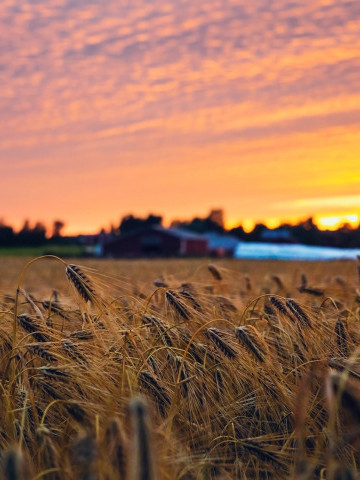
Bioekonomi
I bloggen Bioekonomi får du veta mer om Yrkeshögskolan Novias forsknings-, utvecklings- och innovationsverksamhet inom forskningsområdet systemomställning för att bygga resiliens. Majoriteten av personalen finns huvudsakligen i Raseborg. Här bildar forskare, projektarbetare, lärare, studerande och administrativ personal en dynamisk helhet. På vår blogg kan du läsa om vilka vi är, vad vi gör och om våra resultat. Välkommen!
Vid frågor eller feedback kontakta bloggens administratör Heidi Barman-Geust (Heidi.barman-geust(a)novia.fi)
Vi följer CC BY 4.0 om inget annat nämns.
Systemic Transformation to Build Resilience is one of Novia University of Applied Sciences six' research areas. The activity is mostly located in Raseborg, in southern Finland. As a dynamic unity, our researchers, project workers, teachers, students and administrative personnel produce versatile results in research, development and innovation. We blog about who we are, what we do, what our conclusions are, and how we implement them. Welcome!
If you have questions, please contact Heidi Barman (Heidi.barman-geust(a)novia.fi)
We folllow CC BY 4.0 if nothing else is stated.
When a project turns into a CIRCUS
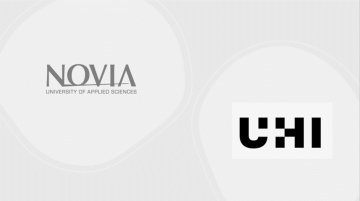
My name is Aurélie, I am a geographer specialised in geo-informatics. I am a new team leader for the expertise of geospatial systems at the faculty of bioeconomy and a new project leader at Novia UAS.
Background
During two weeks in March 2024, I was involved in a pilot project funded by The Scottish Education Exchange Programme Test and Learn Project between University of the Highlands and Islands (UHI) and Novia. Part of this pilot project was on-site visits to foster closer collaboration opportunities between the Environmental Research Institute (ERI) in Caithness and the Faculty of Bioeconomy and Sustainable Use of Natural Resources in Raseborg to share our common knowledge on Cumulative Impacts of Renewable energy and related infrastructure on biodiversity (Collaboration, Understanding and Support) – hence the acronym CIRCUS (don’t we love it when this happens). The main themes of the project were: renewable energy infrastructure – impacts on biodiversity; local development and community experiences in relation to energy development; and building collaboration between institutions. The overarching goal being to create opportunities for training, and share experiences and expertise in research and teaching.
Raseborg
Campus Raseborg in Ekenäs hosted the first visit from March 11 to 14, and welcomed Barbara Bremner, Kenneth Boyd, and Natalie Isaksson. We had coordinated field visits related to renewable energy infrastructure impact assessment and mitigation measures. We notably visited the fish ladder in Billnäs. Indeed, in the context of the dam on the Svartån watercourse, a fish ladder (pool stairs) was built in 2020, re-allowing successful salmonoid migration. We also visited the solar panels farm in Björknas. The visit was hosted by Raseborgs Energi (RE) Maximilian Björkstam and Annika Kärr who explained the impact assessment conducted for this farm and how RE closes the energy circuit with that renewable energy addition, complementing the biomass plant.
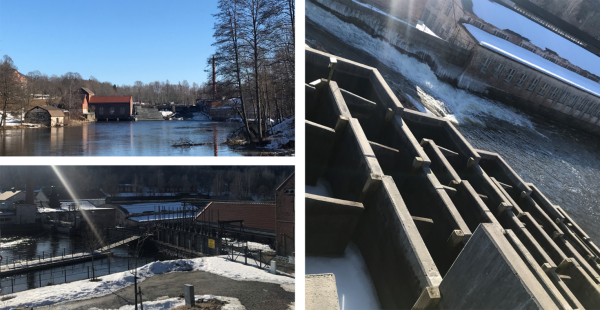 Fish ladder in Billnäs – Raseborg.Picture: Aurélie Noel
Fish ladder in Billnäs – Raseborg.Picture: Aurélie Noel
A research seminar on renewable energy was also organized to showcase Novia’s latest related projects (Boost Nordic Biogas, NylAF, Diverlog, etc.), and hear more about SYKE-based guest Elina Virtanen’s latest applied project with Zonation 5. This led to fruitful discussion around the challenges linked to the energy transition "wicked problem" and definitely resonates with new developments that are being planned in Finland and makes you question the fairness of our energy transition and the readiness of all stakelholders to conduct a true shift.
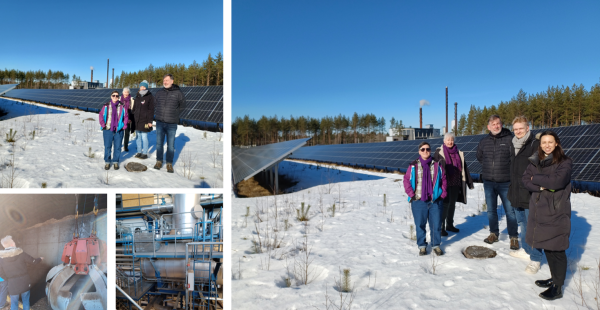 Solar farm and biomass plant in Björknas with Raseborg Energi delegates in Raseborg.Picture: Aurélie Noel
Solar farm and biomass plant in Björknas with Raseborg Energi delegates in Raseborg.Picture: Aurélie Noel
In terms of finding synergies between education programmes and (re-)establishing student mobility, the teaching departments shared their common challenges and quickly settled on new needed ways to see future education. Nina Åkerback, project leader for Greenovet presented very practical ways notably Digivio2030. The campus was also hosting two other delegations that week presenting a novel educational tool based on multi-layered platform for marine spatial planning in the context of Sustainable coastal management. The tool takes the form of a board game and a app: Symphony in collaboration with Breda University of Applied Sciences (BUAS) and State University of Zanzibar (SUZA) also visiting. Novia.
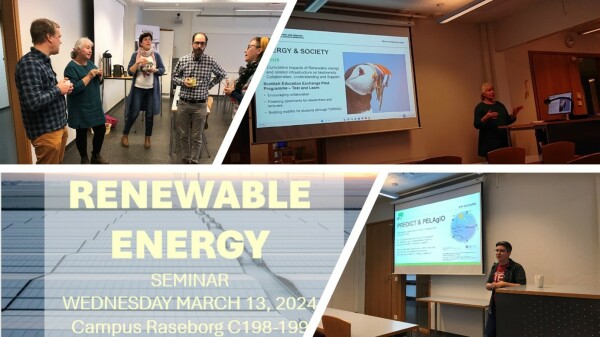 Discussions around the ”wicked” problem of renewable energy during the research seminar in Raseborg.Picture: Aurélie Noel
Discussions around the ”wicked” problem of renewable energy during the research seminar in Raseborg.Picture: Aurélie Noel
Caithness
Then my collaborator Fábio Balotari-Chiebáo, researcher at Novia, and myself went in Thurso, Northern Scotland, from March 18 to 22.
During this visit, we notably got the opportunity to discover and get acquointed with the bioeconomy of the beautiful and remote county of Caithness. Barbara showed us around the breathtaking landscapes of the county and got us deep into storytelling about its questionable integrated management. Indeed, Caithness is notably covered with one of the largest peatland blanket bog of Europe, the Flow Country. The site is protected by special acts but still prone to invasive human bioeconomy activities such as non-indigenous forestry and onshore wind turbines developments (largely discussed during the conference we assisted). The same statement goes for the fragile cliffs of the protected east coast of Moray Firth, and of the Pentland Firth situated at the northern part of the county. Their crucial values for nature conservation (SAC – special area of conservation) and cultural heritage are being tarnished by offshore energy infrastructures (windfarms, tide turbines and abandonned oil rigs). It definitely resonates with new developments that are being planned in Finland and makes you question the fairness of our energy transition and the readiness of all stakelholders to conduct a true shift.
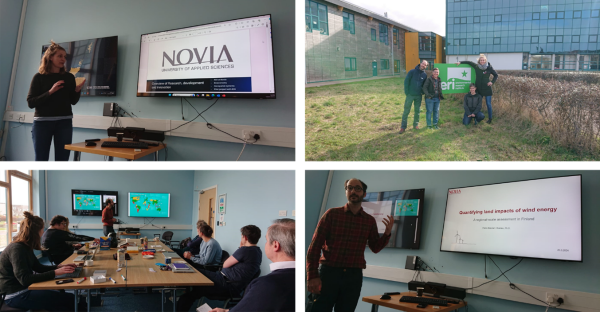 Presentations during the research seminar at ERI. Picture: Aurélie Noel
Presentations during the research seminar at ERI. Picture: Aurélie Noel
Natalie Isaksson and Elisabeth Masden, our third host, introduced us to the amazing educational facilities that UHI hold in Caithness (Ormlie road, Castle Street and Rural Studies Centre). We were showed well populated labs with advanced instruments and gears displaying dynamic research and educational programmes. We got to meet research fellows and teachers working with common themes shared with Novia like forestry, game management, environmental planning, pollution, energy, water quality.
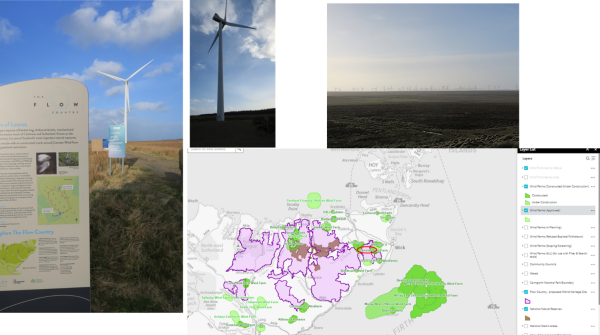 Camster windfarm in the middle of the protected Flow Country peatland in Caithness. Picture: Aurélie Noel
Camster windfarm in the middle of the protected Flow Country peatland in Caithness. Picture: Aurélie Noel
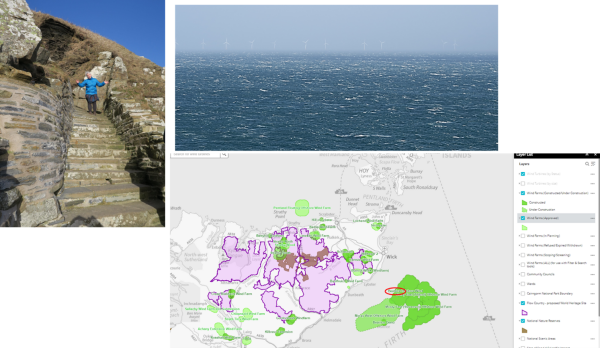 Beatrice windfarm offshore the cultural site of Whaligoe Steps in Caithness. Picture: Aurélie Noel
Beatrice windfarm offshore the cultural site of Whaligoe Steps in Caithness. Picture: Aurélie Noel
Outcomes
Presenting Novia’s work and degree programmes, it was easy to notice how similar our two institutions are, and how partnerships between us is self-evident. We also recognized our obvious matching skill sets and got immediately to work on proposal plan related to our pilot theme of cumulative impacts of renewable energy infrastructure on biodiversity, this truly was an exciting time. At the end of our trip, we identified so many opportunities for both our institutions in terms of research and education that it was already agreed that the pilot project was a success in itself, with much more to pursue in the coming months.
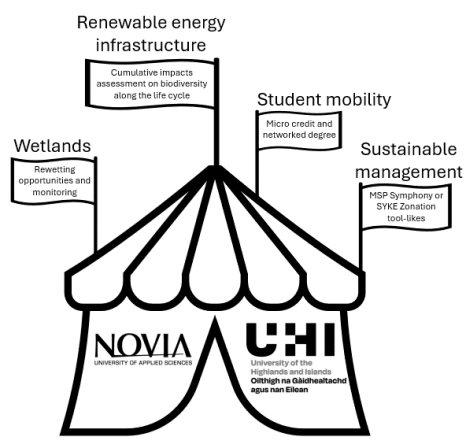 Provisional results of pilot project
Provisional results of pilot project
If you are interested in pursuing this discussion with us, please contact me at aurelie.noel@novia.fi.
Texten har granskats av Novias campusredaktion och publicerats 7.5.2024![]()
Bioekonomi
Blogginlägg som är granskat av Novias redaktionsråd är utmärkta med nyckelordet "Granskat inlägg".
Vi följer CC-BY 4.0 om inget annat nämns.
Ansvarsfriskrivning: Författaren/författarna ansvarar för för fakta, möjlig utebliven information och innehållets korrekthet i bloggen. Texterna har genomgått en granskning, men de åsikter som uttrycks är författarens egna och återspeglar inte nödvändigtvis Yrkeshögskolan Novias ståndpunkter.
Disclaimer: The author(s) are responsible for the facts, any possible omissions, and the accuracy of the content in the blog.The texts have undergone a review, however, the opinions expressed are those of the author and do not necessarily reflect the views of Novia University of Applied Sciences.